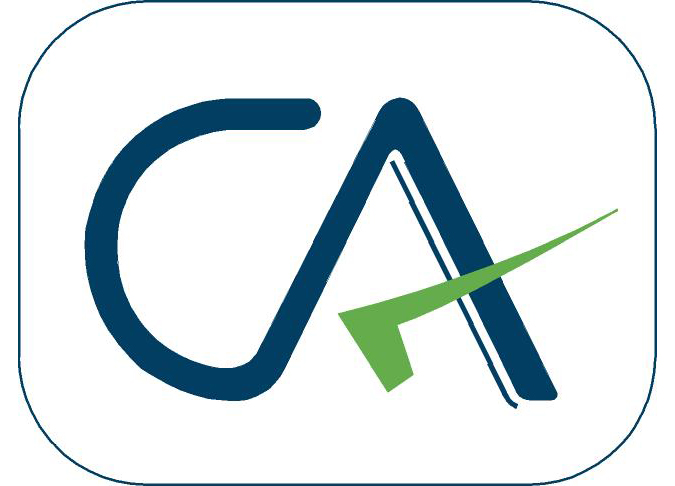Introduction

The Union Budget presented in Feb’ 2023 included the income tax slab for the financial year 2023–2024 / Assessment year 2024-25.
Individual taxpayers are required to pay income tax according to the Income tax slab system that applies to them. A person’s total income is used to the tax bracket they are falling in.
Income Tax Slab for FY 2023-24 (AY 2024-25) for Individuals under
NEW REGIME
These new tax slabs were introduced in the Indian Budget 2023.
The slab table of the new tax regime:
| Tax Slab | Rates |
| Up to Rs. 3,00,000 | NIL |
| Rs. 300,000 to Rs. 6,00,000 | 5% on income which exceeds Rs 3,00,000 Rebate under Section 87A is available, in other words no Income Tax up-to Rs 6,00,000 |
| Rs. 6,00,000 to Rs. 900,000 | 10% on income more than Rs 6,00,000. Rebate under Section 87A is available up-to Rs 7,00,000. |
| Rs. 9,00,000 to Rs. 12,00,000 | Rs 45,000 + 15% on income more than Rs 9,00,000 up-to Rs 12,00,000 |
| Rs. 12,00,000 to Rs. 15,00,000 | Rs 90,000 + 20% on income more than Rs 12,00,000 up-to Rs 15,00,000 |
| Above Rs. 15,00,000 | Rs 150,000 + 30% on income more than Rs 15,00,000 |
Only the following deduction is allowed under New Tax Regime
- Standard deduction for salaried individuals up to Rs 50,000
- Interest on Home Loan u/s 24b on: Let-out property
- Employer’s Contribution to NPS
- Standard Deduction on pension : 15,000 or 1/3 of total pension whichever is lower
- Leave Encashment : Calculation as per Section 10(10AA)(ii)
OLD REGIME
Income Tax Slab for Individuals
| Tax Slabs | Resident Individual Age < 60 Years | Resident Senior Citizens 60 > Age < 80 | Resident Super Senior Citizens Age > 80 |
| Up-to Rs 2.5 Lakhs | NIL | NIL | NIL |
| From 2.5 Lakhs- Rs. 3 lakhs | 5% (NIL with 87A Rebate) | NIL | NIL |
| Rs. 3 lakhs – Rs. 5 lakhs | 5% (NIL with 87A Rebate) | 5% (NIL with 87A Rebate) | NIL |
| Rs. 5 lakhs – Rs. 10 lakhs | 20.00% | 20% | 20% |
| Rs. 10 lakhs and more | 30.00% | 30% | 30% |
Tax Slabs for Companies
| Particulars | Old Regime Tax Rates | New Regime Tax Rates |
| The company, which is registered on or after October 1, 2019, chooses section 115BAB (which is not covered by section 115BA and 115BAA), and it began manufacturing on or before March 31, 2023. | – | 15% with 10% Surcharge and 4% HEC |
| The company chooses to use Section 115BAA, which requires that the total income of the business be determined without the use of certain incentives, deductions, exemptions, or additional depreciation. | – | 22% with 10% Surcharge and 4% HEC |
| FY 2017-18 Turnover and gross receipts for the company were less than Rs. 400 crores. | 25% | 25% |
| Other Domestic Company | 30% | 30% |
- Surcharge that businesses must pay
- 7% of income tax in cases when total income exceeds Rs 1 crore upto Rs 10 crore
- If the total income exceeds Rs. 10 crores, surcharge is 12%.
Partnership Firms and LLPs
An LLP or partnership firm is subject to 30% taxation under both Old and New Tax Regime.
Moreover:
- A 12% surcharge is applied to total income over Rs 1 crore.
- Cess Rate for Health and Education: 4%
Tax Slab Rate for FY 2023–2024 (AY 2023–2024), New Tax System: Why Is There a Choice?
The taxpayers under the new tax regime. Which is default have the choice to select from the following options:
- to pay taxes at reduced rates in accordance with the new tax regime, provided that they abstain from certain (permissible) income tax exemptions and deductions.
- to keep paying taxes at the current rates of income tax. If the taxpayer chooses to remain in the old system and pays tax at the current higher rate, they are eligible for exemptions and rebates.
Requirements to Choose the New Tax System
The taxpayers who choose the new tax System will typically forgo some of the exemptions and deductions offered under the previous tax system.
Among the frequent exclusions and deductions that are prohibited under the new law are:
- Allowance for Travel on Leave
- Conveyance allowance
- Allowance for Housing Rent (HRA)
- Chapter VI-A deduction (80C, 80D, 80E, etc.) (With the exception of Section 80CCD(2))
- Additional special provisions (Section 10(14))
Common Deductions that are Allowed under New Tax Rate Regime
- Typical Deductions Permitted by the New Tax Rate Structure
- Section 80CCD investment in Notified Pension Scheme (2)
- Conveyance allowance for costs related to commute to work
- Section 32 depreciation, excluding additional depreciation
- Deduction for section 80JJAA employment of new employees
A Comparative Analysis of the New and Old Tax Slabs
| Tax Slabs Under New And Old Regime | |||
| Old Tax Regime | New Tax Regime | ||
| Tax Slab (Rs) | Old Tax Rates | Tax Slab (Rs) | New Tax Rates |
| 0 – 2.5 Lakh | 0% | 0 – 3 Lakh | 0% (NIL with 87A Rebate) |
| 2.5 Lakh – 5 Lakh | 5% (NIL with 87A Rebate) | 3 Lakh – 6 Lakh | 5% (NIL with 87A Rebate) |
| 5 Lakh – 10 Lakh | 20% | 6 Lakh – 9 Lakh | 10% (NIL with 87A Rebate upto Rs 7 Lakhs) |
| 10 Lakh and above | 30% | 9 Lakh – 12 Lakh | 15% |
| – | – | 12 Lakh – 15 Lakh | 20% |
| – | – | 15 Lakh and above | 30% |
Old vs New Regime : Which is Better ?

The new tax regime can largely benefit middle-class taxpayers who have a taxable income of up to Rs 15 lakh. The old regime is a better option for high-income earners.
The new income tax regime is beneficial for people who make low investments. As the new regime offers seven lower-income tax slabs, anyone paying taxes without claiming tax deductions can benefit from paying a lower rate of tax under the new tax regime. For instance, the assessee having total income before deduction up to Rs 12 lakh will have higher tax liability under the old system if they have investments less than Rs 1.91 lakh. Therefore, if you invest less in tax-saving schemes, go for the new regime.
That being said if you already have in place a financial plan for wealth creation by making investments in tax-saving instruments; mediclaim and life insurance; making payments of children’s tuition fees; payment of EMIs on education loan; buying a house with a home loan; and so on, the old regime helps you with higher tax deductions and lower tax outgo.
In light of the above and considering the new income tax regime, if taxpayers want to opt for the concessional tax rates, they may evaluate both regimes. Hence, it is advisable to do a comparative evaluation and analysis under both regimes and then choose the most beneficial one as it may vary from person to person.

2 thoughts on “Changes in Income tax Slabs and How to take advantages moving forward in FY23-24”